This article provides illustrations of three workflow examples using the Clusters data visualization
Introduction
The Cluster Wheel is an interactive clustering visualization that allows a user to quickly explore topics of interest regardless of data size. Users can use the Clusters view on the Dashboard to zoom in on topics of interest and easily isolate the signal from the noise in data. While this tool can provide insights into the shape and content of the project data, there are a few specific workflows that can illustrate concrete benefits. For more details on the features of the Cluster Wheel, see Clusters.
Process Flow
Understanding your document population

Exploring the neighborhood

Organizing by BDID: BDID is a unique value given to each document that identifies the location of that document on the Cluster Wheel.

Understanding the document population
The Cluster Wheel visualization offers a layered view of the lexical content of the current dataset, be that every document in the entire project to a filter or search result. This allows a user to quickly explore topics of interest regardless of data size. You can select a cluster to zoom in on topics of interest and see how a general grouping branching into more specific clusters in the outer rings of the wheel.
- Select the Clusters tab from the Dashboard screen.
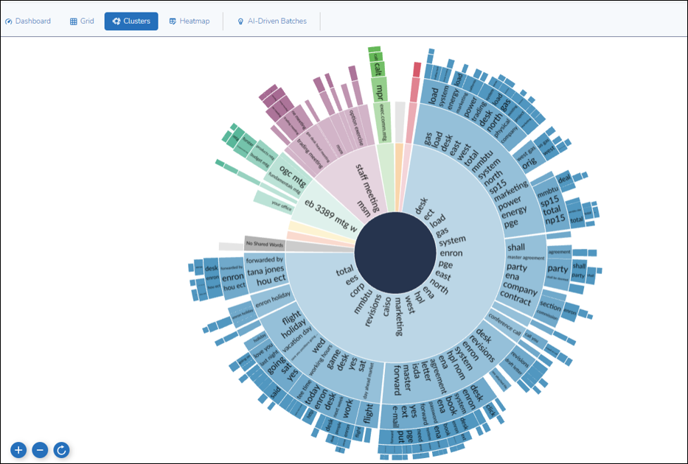
- Examine the organic breakdown of documents by lexical content (that is, comparing documents by the words). Note that this is not a “concept wheel.” In the above example, you can see by the color and size of the core cluster that the vast bulk of the 400,000 documents are similar, with a few outlying clusters.
- Click on a cluster to get a further breakdown of that cluster (note the list of terms and phrases that are dominant in the cluster).
NOTE: Clusters uses a “best fit” algorithm, so not every term is to be found in every document in this cluster.
In the example below, the ”staff meeting” cluster has been selected.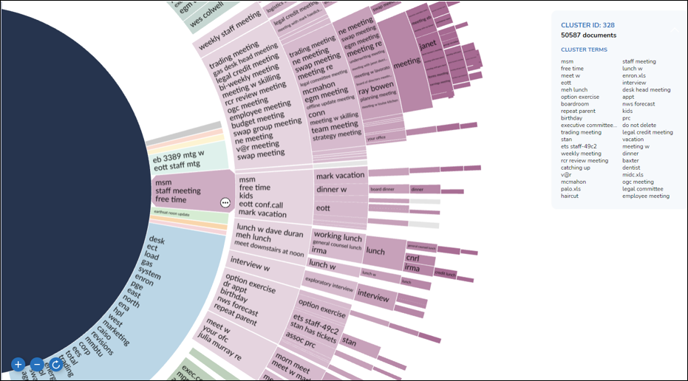
- Upon selecting a cluster, you have several options:
- Drill down further to select/examine a subsidiary cluster of interest.
- To see the documents in a cluster, click on the (…) options button and choose Add Cluster to Search.
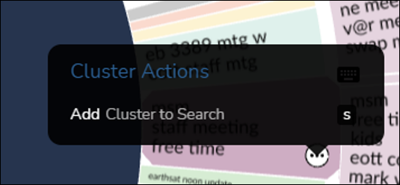
- You may also leverage the other Dashboard tabs to examine these documents in other Dashboard visualizations, or use Grid actions to put them into a Work Folder or Translate. For example, we can decide that “staff meeting” documents are nonresponsive and toss them into a Work Folder using bulk Update from the Grid to examine at a lower priority.
Browsing the neighborhood
Whereas in the previous workflow you started from the center and worked your way outward to the more focused clusters, this one starts from a document of interest and works inward. Much like how Concept Search is a way of finding keyword-adjacent documents, this method allows the user to find documents that do not respond to the initial search, but are lexically highly similar, and thus may be of interest.
For example, a document may respond to the keyword search “chicken,” but a document sharing the leaf cluster at the very edge of the Cluster Wheel will be highly similar but may not have that exact word.
- Perform any searches germane to your subject of inquiry to limit the body of documents to be examined. Select the Dashboard view.
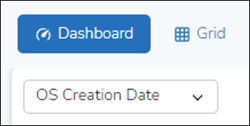
- Examine the document list on the right to find a document of interest, and click on the document’s “cluster wheel” icon.
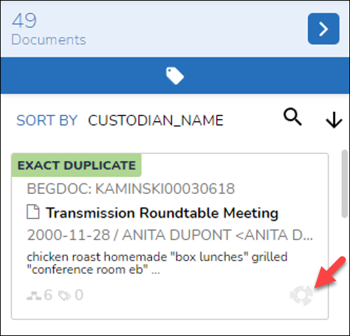
- This will open the Clusters view and indicate where that document resides on the Cluster Wheel. Remember that emails and their attachments may be on completely distinct parts of the Cluster Wheel, because it organizes by the lexical content of each individual document.
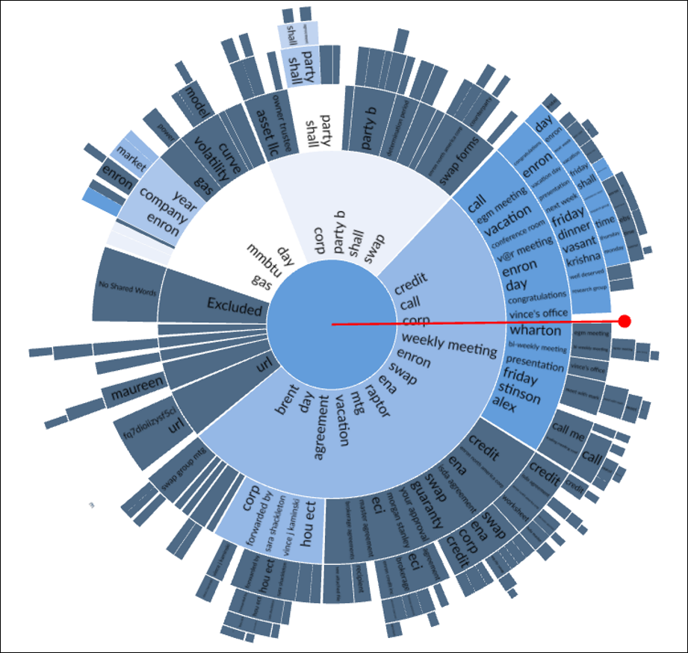
- Either navigate using your mouse to browse the nearby content, or even better, click on the RED DOT at the end of the line to zoom down to the cluster where that document resides.
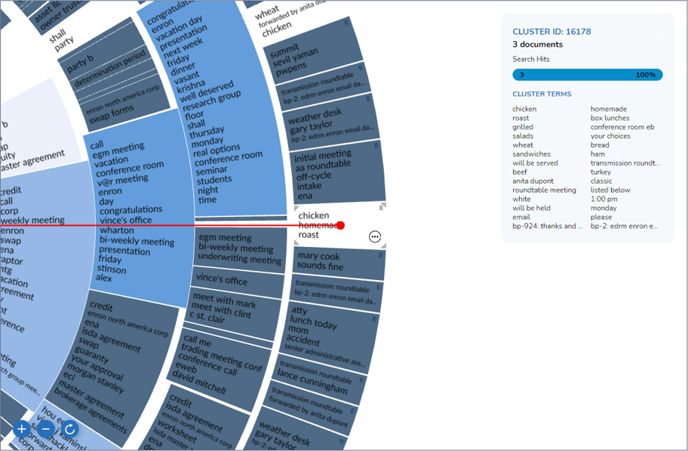
- From here, either browse other clusters, click on other documents in the document list to see where they are, or add a cluster to the search filter using Step 4 of the previous workflow.
Sorting by BDID
This final workflow leverages the power of the Cluster Wheel but does not use the wheel itself. As Reveal Review analytics run during ingestion, they organize every document into a unique spot on the edge of the Cluster Wheel. That organization can be applied to review, making for an efficient way of stepping through documents.
- Perform any searches germane to your subject of inquiry to limit the body of documents to be examined. Select the Grid view.

- Manage Field Profile (or ask your admin to do this) and add BDID to the field profile. BDID is a unique value given to each document that identifies the location of that document on the Cluster Wheel.
- Ensure the field is visible and users have access to the field profile.
- Select the field profile with BDID.
- Using the Grid column header, click ONCE on the column header for BDID. This performs an ascending sort of the column and will therefore sort the documents using BDID. Since BDID identifies where documents are on the Cluster Wheel, this sort will keep similar documents together. A review in this order is highly efficient since the reader will move through comparable documents at a time. The larger the body of documents under consideration, the more this will matter.
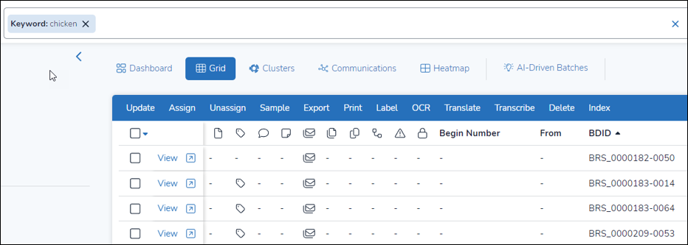
Last Updated 3/25/2024
